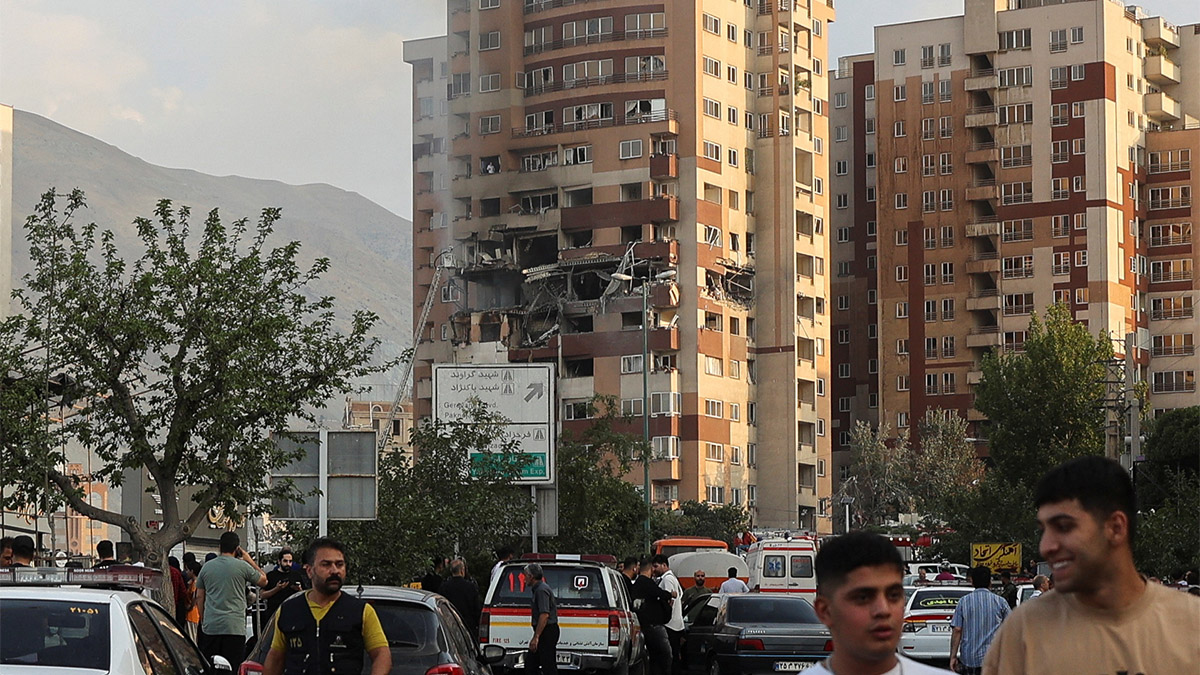Iran’s economy, crippled by 32% inflation and $33bn reserves, struggles to match Israel’s $223bn war chest. Sanctions and stagnant growth tilt prolonged conflict in Tel Aviv’s favour.
The West Asian tension entered new territories in the early hours of Friday, with Israel’s air force launching a massive attack on Tehran , targeting Iranian military leadership and its nuclear enrichment sites. Hours later, Iran responded with over a hundred drones, low-cost ones, to target Israeli sites.
While Israeli attacks caused a lot of damage to Iranian nuclear sites and killed Iranian Army chief Mohammad Bagheri and also the Islamic Revolutionary Guard Corps (IRGC) chief Hossein Salami , and some top nuclear scientists, Iranian counter-attack failed to cause much damage as per reports.
Why Israel attacked Iran, now
Israeli defence forces put out multiple statements on social media and to the press saying that Iran had reached “the point of no return” in its nuclear enrichment programme, which Israeli Prime Minister Benjamin Netanyahu described as a threat to the “survival” of his country.
The Israeli military said Iran secretly advanced a plan for the “technological advancement of all parts of the development of a nuclear weapon”.
“In recent months, accumulated intelligence information has provided evidence that the Iranian regime is approaching the point of no return,” the IDF says in a statement.
“The convergence of the Iranian regime’s efforts to produce thousands of kilograms of enriched uranium, alongside decentralized and fortified enrichment compounds in underground facilities, enables the Iranian regime to enrich uranium to military-grade levels, enabling the regime to obtain a nuclear weapon within a short period of time,” the military says.
How challenging it is for Iran
Iran faces significant economic constraints that would severely limit its capacity to sustain an extended conflict with Israel. Despite recent increases in military spending, structural weaknesses, sanctions, and dwindling resources undermine Tehran’s financial resilience.
Iran looks economically vulnerable as it enters a military conflict with Israel.
Stagnant growth and soaring prices
Iran’s real GDP growth is projected at just 0.3 per cent in 2025, a sharp downgrade from earlier estimates of three per cent by the International Monetary Fund (IMF). Chronic inflation, recorded at 32 per cent in January 2025, erodes purchasing power, with 27 per cent of Iranians living on less than $2 a day.
Iranian currency, the rial, has collapsed to over 1 million per US dollar, slashing the real minimum wage to $120 monthly. Such instability strains public finances and limits the government’s ability to fund prolonged military operations.
Impact Shorts
More ShortsOil exports and sanctions
US sanctions under President Trump have cut Iran’s oil exports, with production expected to fall by 300,000 barrels per day (bpd) in 2025. Despite allocating 420,000 bpd (24 per cent of exports) to military funding — valued at $12.7 billion — revenue remains constrained. Iran observes predict steeper export declines of 500,000 bpd, exacerbating fiscal shortfalls.
Foreign reserves and public debt
Iran’s gross international reserves stood at $33.8 billion in January 2025, a fraction of its 2015 peak of $128.4 billion. By comparison, Israel’s reserves hit a record $223.6 billion in May 2025. Tehran’s limited reserves restrict its capacity to import essential goods or stabilise its currency during a conflict.
Military spending versus Economic reality
Iran’s 2025 military budget tripled to $12.7 billion as said above, signalling a shift from diplomacy to militarisation. However, this prioritisation comes amid a growing fiscal deficit and industrial stagnation, with 50 per cent of production capacity halted in some sectors due to energy shortages. The economy’s reliance on oil—coupled with sanctions—makes sustained military investment precarious.
Iran’s adversary: Israel enjoys economic resilience
Israel’s economy grew 3.4 per cent in Q1 2025 despite ongoing conflicts, supported by robust tech exports and a $223.6 billion forex reserve. Defence spending will rise to $45 billion in 2025, funded by a diversified economy and international alliances. Unlike Iran, Israel benefits from US security guarantees and access to global financial markets, providing a strategic cushion.
What to make of the conflict as strategic implications
Resource asymmetry: Israel’s reserves are 6.6 times larger than Iran’s, enabling longer war sustainability.
Domestic pressures: Iran’s “resistance economy” is buckling under sanctions and inflation, risking public unrest if military spending deepens austerity.
External support: Iran’s reliance on China for oil sales and Russia for military tech is vulnerable to US pressure, while Israel enjoys unwavering Western backing despite Trump’s frequent public disapproval of Netanyahu’s policies.
While Iran has ramped up military expenditure, its economic fragility and Israel’s financial robustness make an extended war unsustainable for Tehran without external intervention or rapid sanctions relief — both look unlikely unless other West Asian powers such as Saudi Arabia and the United Arab Emirates change their stance dramatically.


)

)
)
)
)
)
)
)
)



